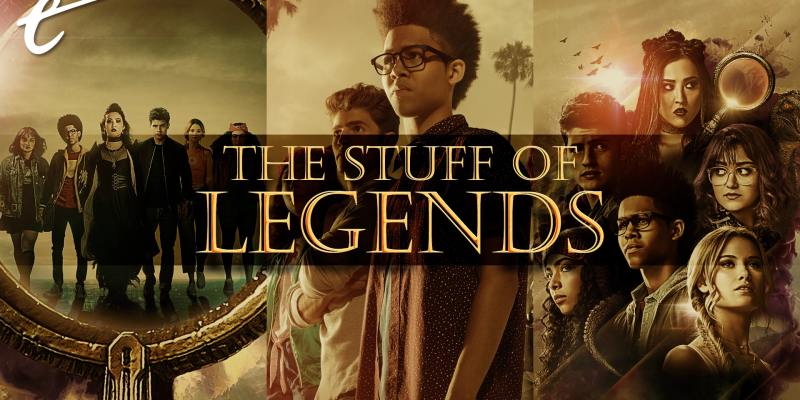Marvel’s Runaways is a struggle to enjoy. Where much of Marvel’s storied heroes either have decade-spanning runs or short-but-sweet mini-series, Runaways… just… won’t… stop. Except you also don’t want it to — it’s a brilliant series when firing on all cylinders. The problem is Runaways often breaks down before it gets wherever the latest creative team was driving to.
Originally conceived in the early 2000s by Brian K. Vaughan and Adrian Alphona, the pitch instantly grabs you: A group of teenagers find out their parents are supervillains, and as they flee from them, the team learns that they’ve inherited their parents’ powers and abilities. To add even more spice, named characters could die permanently, adding a sense of real urgency to every conflict. This was a Marvel comic that tapped into the same energy as Ultimate Marvel but without going too far, and it just worked — for a while anyway.
During the original run, the team consisted of the tactical genius gangsters’ son Alex, airhead son to scientists Chase, daughter of time travelers Gert (and her pet dinosaur), the cosmic daughter of aliens Karolina, pint-sized mutant brawler Molly, and the Catholic witch Nico. Each of them either had their powers suppressed or they had to steal their associated gadgetry / dinosaur early in their careers. While initially tempted to play at being street-level superheroes, the team quickly comes to realize that survival and stopping their parents from sacrificing young women to ancient apocryphal Biblical demigods is of greater priority.
Their parents’ criminal empire, the Pride, effectively ran all major crime on the western seaboard, earning them the respect of figures like the Kingpin. From Karolina’s Hollywood star parents swaying the masses through the media to Gert’s parents manipulating the timestream for the Pride’s benefit, the odds are incredibly stacked against the initial slate of young heroes. And that’s before all the twists and turns like a vampire and an old foe given a second chance to strike at them when they finally think they’re in the clear.

That’s part of the brilliance of the original Runaways volumes. In addition to being one of Marvel’s few teams that was almost entirely women, it merged the tension of coming of age with the uncertainty of a Kirkman series like The Walking Dead. It’s a journey of self-discovery compounded by the sort of heightened drama superhero comics are best at — and thankfully, unlike many of its contemporaries, Runaways goes all the way.
Nico is initially indifferent in her Catholicism, yet after coming face to face with metaphysical beings, she starts taking that stuff seriously, all while further studying her magical Staff of One to better lead the Runaways. Karolina comes out as a lesbian early in the series, later marrying a non-binary shape-shifting Skrull named Xavin; Xavin is a fascinating character study of a gender identity rarely tapped into. Chase’s aversion to science is revealed as a means of rebelling against his abusive father. Later teammate Victor Mancha, the pseudo-son of Ultron, deals with existential questions of whether he even has a soul as a cybernetic man. And all of this is happening while characters are delivering sharp lines of dialogue amid heartbreaking decisions! It’s absolutely incredible.
Runaways notably wasn’t even a series created simply out of passion; it was part of Marvel’s “Tsunami” imprint that was trying to hook younger readers. Yet there’s a ton of fan service for longtime Marvel readers, with niche characters from Power Pack, Generation X, Blade, and Cloak & Dagger showing up. Many new Marvel readers received their first exposure to many of these characters there, and it worked so well that the live-action TV shows based on Runaways and Cloak & Dagger found a crossover. Several of the heroes even banded together for their own mini-series comic spin-off called Loners.

The problem underscoring Runaways is Vaughan is the sort of writer who tells really long stories. From his time on Lost and Y: The Last Man to the still incomplete Saga and Paper Girls, he’s not known for short-form fiction. Multiple arcs were either hinted at or established that went unfinished when he and Alphona ended their run at Runaways Vol. 2 #24. The series at that point had already outlasted its many Tsunami contemporaries by easily a dozen issues, and Marvel had no intentions of hitting the breaks on its new hit series. Then things got… weird.
First off we had Joss Whedon with Michael Ryan illustrating Dead End Kids, a volume that’s gorgeous at times but also leans exceptionally hard into comedy by using, of all people, the Punisher as a slapstick punching bag. Though initially interesting in concept, Whedon’s sole addition to the group was the former child-bride Klara, whom the team rescues but is subsequently underdeveloped. Though her control of roses is interesting, no writer afterward wanted to address her incredibly bleak backstory. Also, despite a kinship over their discussions of spirituality and personal aspirations in the face of villainous heritage, Whedon breaks up Victor and Nico for no great reason.
Next up to bat was Terry Moore with Humberto Ramos illustrating Dead Wrong and Takeshi Miyazawa illustrating Rock Zombies. Fan-favorite character Xavin gets written out of the comic, never to return, pretending to be Karolina so she isn’t abducted by her fellow aliens. Instead, now we have a DJ using occult music to create plastic surgery zombies! Suffice to say, that’s not what people read Runaways for, and fans think this might be the series’s worst arc.
Next, we’re going to hand the characters over to Christopher Yost and James Asmus for a single-issue “run” before handing the baton to Kathryn Immonen and artist Sara Pichelli.

Clearly, Marvel really didn’t seem to know what to do with the Runaways, which is a shame as Immonen and Pichelli’s Homeschooling is the first volume to truly capture the essence of Vaughan and Alphona in not only art direction and tone, but world-building. It’s also the first volume in a while where a meaningful death happens, and Immonen rightly slowed the whole thing down to give characters a chance to process all the things that had happened to them over the last few creative “shifts” they’d undergone.
The story promised a resurrection for another character — the marketing for the series was all about how “one will die while one will live again.” It was fairly well reviewed in kind. Except then Marvel thought about it and canceled the entire series before delivering on the resurrection!
After this frustrating turn of events, the series effectively went dormant. Nico, Chase, Victor, and Alex would all appear in various other series like A-Force, Avengers Academy, Mystic Arcana, and Vision, with occasional nods to their old teammates having finally settled down after years of running. Many of these paid off on the team’s previous cameos in events like Civil War: Young Avengers/Runaways, giving the heroes a proper send-off that the mainline series clearly couldn’t.
After this, the group’s name was solely used in the final years of the Ultimate Marvel universe for a secret mutant covert ops team. It wasn’t until 2015 that fans would see an actual continuation with the Secret Wars crossover / reboot / event comic run, “Doomed Youth.”

The thing is, despite occurring amid the Marvel equivalent of Crisis on Infinite Earths, Noelle Stevenson and Sanford Greene’s Runaways mini-series is kinda great. Save for Molly, the rest of the cast are rewritten Marvel mainstays like X-Men Jubilee and Pixie, the aforementioned Cloak and Dagger, and the future second Hulk Amadeus Cho, among others. Though a rather out-there reimagining with the titular Runaways fleeing a tyrannical school in an apocalyptic wasteland, it’s an enjoyable read. The cast are just as diverse, with a satisfying reinterpretation of several classic Marvel characters like the Winter Soldier showing up. It seemed like Stevenson and Greene had the perfect backdoor pitch to relaunch Runaways as their own isolated continuity, rather like Spider-Gwen currently is.
Except that’d be the easy thing to do. Instead, Marvel sat on the IP for another two years, which brings us to the present with the Rainbow Rowell era, with art from Kris Anka and Andres Genolet. I’ll be quite candid with you — this one has left me incredibly conflicted. On one hand, Rowell’s soft reboot tries to pick things back up after Homeschooling and has a strong sense of personality that still feels like Runaways. On the other, it’s opened with a jarring explanation for the character resurrection, and the events that transpire thereafter get stranger.
Granted, jarring changes are pretty typical for the new series, with characters not quite meshing with their original selves; Rowell seems to retcon or rewrite when it favors where she wants characters to go. For instance, Nico has discarded her spiritual beliefs off-panel, spontaneously become bisexual, and is just as suddenly into Karolina, with whom she’d previously established she didn’t have any attraction. Alex is essentially a hybrid of the various versions of himself over the past few years, never feeling quite consistent with any of them. And Xavin is still gone, even though their return would be a huge representation win. Also, Molly happens to have an evil grandmother now to provide an unnecessary explanation as to her family’s mutant origins. I mean, at least there aren’t plastic surgery zombies?

Regardless of how it might read for those who’ve been following from the beginning, Rowell’s series has sold well and is still ongoing as of this writing. Whether it’s your cup of tea or not is going to hinge on whether you come to Runaways for the interpersonal soap opera stuff or the headier going there parts. If you just want to follow this dysfunctional found-family get into increasingly out-there scenarios and don’t mind some eyebrow-raising retcons, it’s a fine continuation. It often feels more like a loving, if not heavily researched, passion piece. That said, If you want something like the original run, you may be better off digging into some of Vaughan’s more recent work outside of Marvel.
As it stands, Runaways is a series that, at times, leaves you wondering whether its 100+-issue longevity was to its benefit or detriment. Yet despite the ups and downs, it proved popular enough to be considered for a movie, which later translated into a three-season series on Hulu. The show draws from both the new and old runs, attempting to mesh the various interpretations into one unified image. While things turned out quite different from where they started, I’m grateful that Runaways remains relevant. It shows that not only can new ideas still succeed at major publishers, but that even if the series isn’t quite your thing now, that might change down the road.
Or Marvel will just spontaneously cancel it again and sit on it for a decade. It’s always a 50/50!
